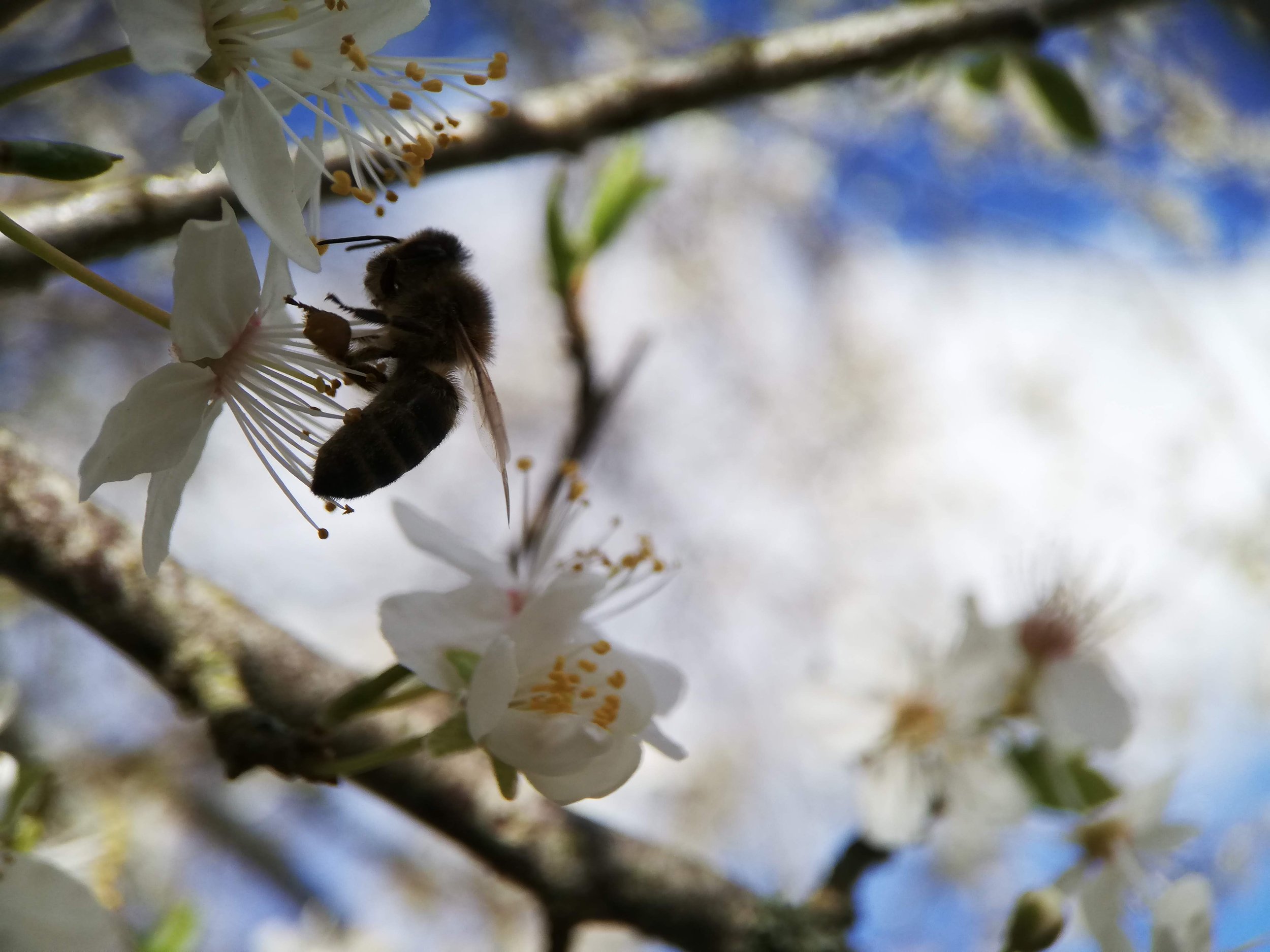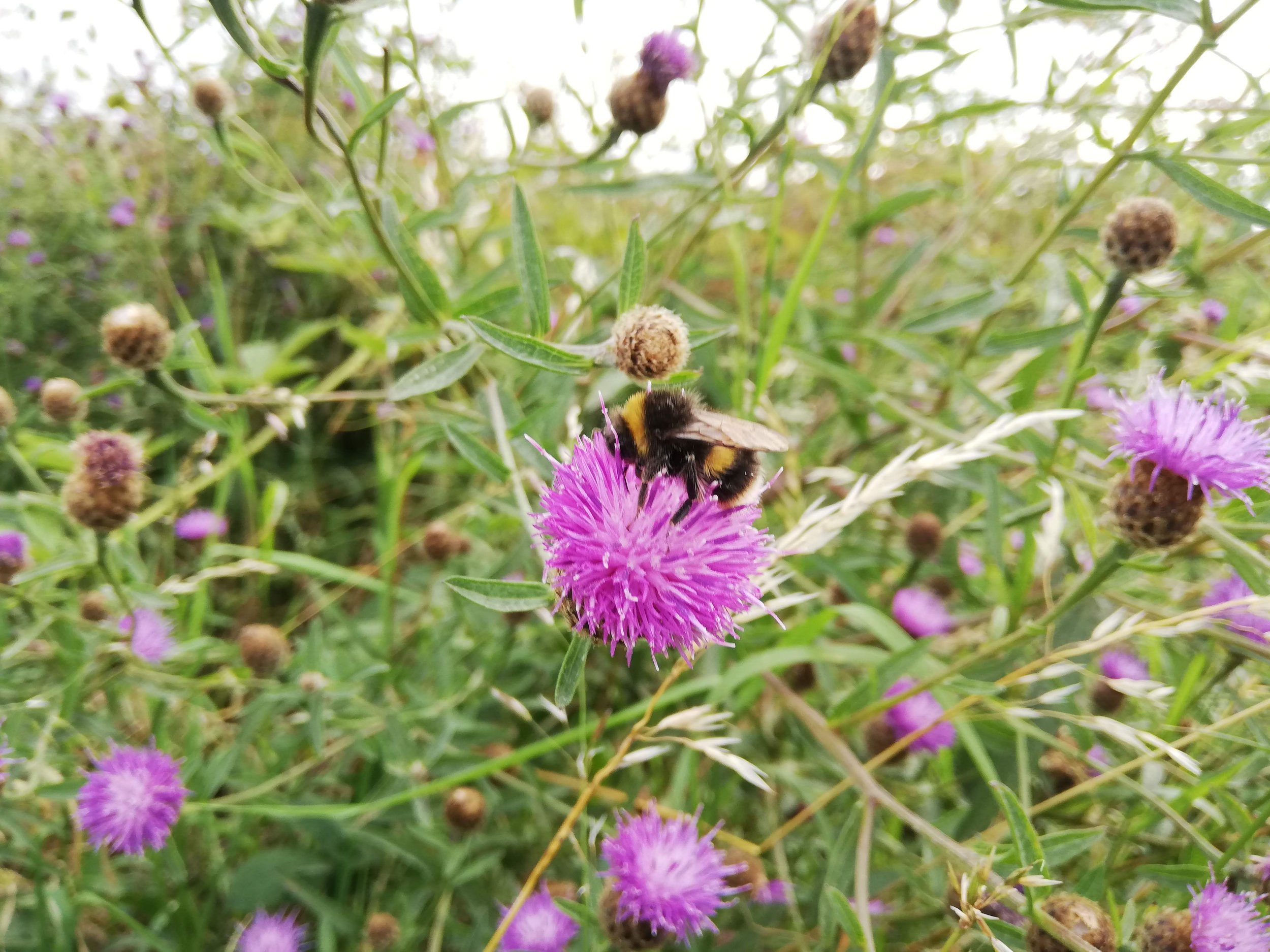Bees and Pollinators
Saturday 20th May was World Bee Day. Founded in 2017, its purpose is to raise awareness of the importance of bees and other pollinators, and the threats they face.
There are over 250 species of bee in the UK alone. We have six taxonomic families containing 26 genera, including bumblebees (24 species), mining bees (67 species), leafcutter bees (7 species), nomad bees (34 species), and mason bees (12 species). Not all bee species found in the UK are native or wild; most honeybees are managed, while some species have arrived on our shores fairly recently to be kept and managed under license for use in commercial growing operations such as in polytunnels.
Bumblebees are perhaps the most easily-recognised and beloved of our bees. They are distinctively large and furry with a loud buzz, and have a characteristic meandering, ‘bumbling’ flight. Some bumblebees live in colonies, but others - the cuckoo bees - are solitary nest parasites, laying their eggs in nests of other bees so their larvae can feed on the food collected for the other’s own young. The easiest way to start identifying a bumblebee is by the colour of its tail - it will either be white, or red, or have a ginger-yellow coloured body. See the Bumblebee Conservation Trust’s Bumblebee ID Guide.
Bumblebees and honeybees are social, meaning they live and work in a colony to rear their young; the other 90% of bees are solitary.
Bees nest in a range of places, from underground, to inside flowers, dead wood, tussocks of grass, trees, bird boxes, cavities in walls, and even abandoned snail shells. And they use a range of materials to line their nest cells: leafcutter bees cut neat little crescents from leaves; wool carder bees collect plant hairs, red mason bees use mud, mining bees nest in the ground and leave small volcano-like mounds of excavated soil on lawns and mown banks. Next time you see a bee hotel, have a look to see if you can spot the different materials blocking the tubes, it may indicate which type of bee made it.
Bees, wasps, hoverflies, and bee-flies are often mistaken for each other. Bees and wasps have two pairs of wings, while flies (including hoverflies) have only one pair of wings and large eyes. Hoverfly pattern and colouring mimics bees and wasps as a defense mechanism against predators which want to avoid stinging insects, but they are stingless themselves. Wasps are often regarded as pests but are in fact incredibly important pollinators and pest-controllers themselves, hunting insects to feed their larvae. Bee-flies look like bees and lay their eggs in bee nests, but have a distinctive long proboscis and only two wings rather than four.
As mentioned before, World Bee Day is not just about bees. There are around 1500 insect species that pollinate plants in the UK, including bees, wasps, flies, butterflies, moths, and beetles. We all know that pollinators are vitally important, but do we really understand why?
They feed on pollen and nectar in flowering plants, collecting pollen from one flower as they do and transferring it to others, which are then fertilised and can create fruit or set seed and reproduce. Pollination and fertilisation between different plants of the same species is important for maintaining genetic diversity, and having a diverse range of plant species within a habitat is important for ecosystem health. The survival of plants provides food and habitat for a range of other species, and pollinating insects are themselves sources of food for other animals such as bats and birds. If pollinators decline, whole ecosystems suffer. An estimated 80% of all plants in Europe, including fruits, vegetables, biofuel crops, and livestock fodder crops, rely on insect pollination. In addition, some pollinators like wasps and beetles provide pest-control services which benefit gardeners and growers, and humans get little wellbeing boosts from seeing swathes of wildflowers, butterflies, bumblebees, and other wildlife that pollinators support.
The health and resilience of pollinator populations is determined by a range of factors, including pests, diseases, and invasive species. One of the largest is land use - the availability of suitable habitat for shelter and nesting, and adequate sources of pollen, nectar, and food plants for different life stages. Since the 1930s large areas of habitat have been destroyed, fragmented, and degraded - in England and Wales we have lost 97% of our traditional wildflower meadows. Private gardens and municipal planting in public spaces contain large proportions of ornamental plants bred for human aesthetics or ease of maintenance, which often aren’t suitable for native wild pollinators. Some pesticides and agricultural chemicals can be poisonous or harmful to pollinators, with some even causing memory problems leaving them unable to forage. Increasing instances of extreme weather events such as high rainfall, prolonged heatwaves, and wildfires can kill of large numbers of a population, and in the long-term climate change will mean populations moving or spreading to other areas or countries.
There are a number of ways we can all help our pollinators, whether in our own garden or outside space, or in the wider community. Plant some locally-sourced native wildflowers, and choose a mix of flower shapes and colours to provide forage for a range of different pollinators. Avoid using pesticides, and never spray open flowers if you do. Allow some of the grass to grow long and the so-called ‘weeds’ to flower. Create nesting sites such as bee hotels, deadwood, or small areas of bare ground or short turf. Provide water by putting a shallow dish in a shady spot, filled with gravel or small pebbles and enough water to just cover them. Read more here in the RHS guide to helping our declining bees.
See also:
Friends of the Earth Bee identification guide
An Introduction to British Bee Identification
Identify solitary bees in the UK

